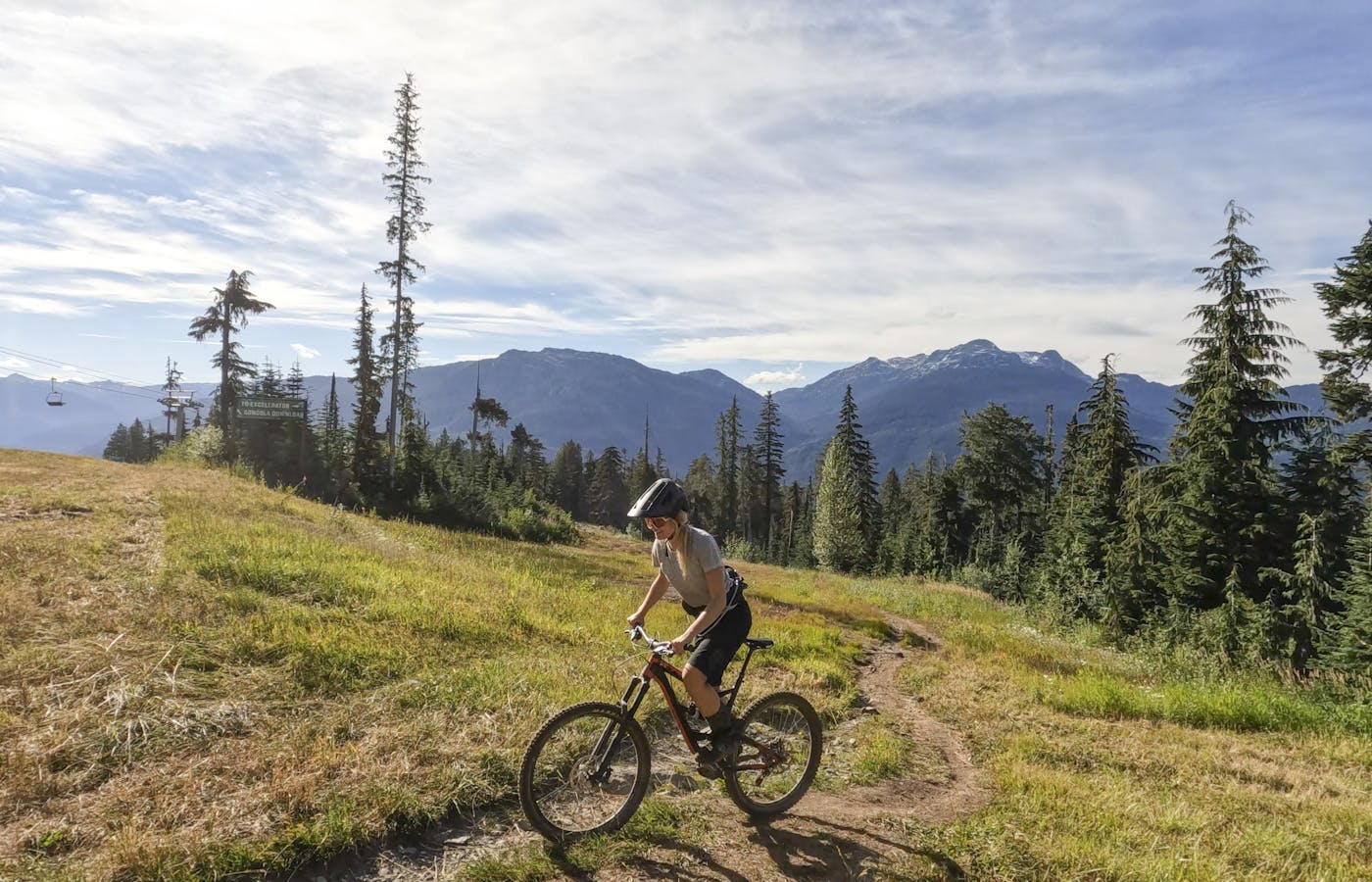New Framework Aims to Conserve Our Public Lands
By: Rachel Fussell, eMTB policy and program manager

A newly proposed Public Lands Rule could help restore and protect 245 million acres across the country. PeopleForBikes weighs in on the proposal and what it could mean for recreationists.
UPDATE: On April 18, 2024, the Bureau of Land Management (BLM) published a new Public Lands Rule adding "conservation" to the agency's mandate of multiple uses of public lands. The rule recognizes conservation as an essential component of public lands management, putting the preservation, protection, and restoration of the natural environment and wildlife on equal footing with other uses of these lands. PeopleForBikes will remain involved in the implementation of the rule, stay in touch with our partners across BLM field offices, and provide the industry with any updates as they become available.
The Bureau of Land Management oversees 245 million acres of land, the most of any governing entity in the United States. That expanse, spread across all 50 states, spans diverse communities and ecosystems that offer spectacular vistas, irreplaceable cultural resources, critical wildlife habitat, sources of clean water, world-class recreational opportunities, and the potential to combat climate change.
To protect that land for future generations, the BLM opened a public comment period on March 30, 2023, for the newly proposed Public Lands Rule. If enacted, this rule would add "conservation" to the agency's mandate of multiple uses of public lands, elevating conservation — or the preservation, protection, or restoration of the natural environment and wildlife — as legitimate use. The proposed rule strives to address shortcomings in management related to land health to better ensure the "health, diversity, and productivity of public lands for the use and enjoyment of present and future generations."
On the millions of acres that BLM oversees, year-round recreational opportunities entice more than 80 million recreation visits annually. This land also boasts some of our nation’s most iconic mountain bike trails and a large and growing number of electric mountain bike trails. Recreation and tourism on BLM lands contribute $11.4 billion to local, often rural communities, and the overall national economy. The BLM offers unique and unparalleled access as a land management agency for mountain bikers and recreationists of all stripes.
PeopleForBikes backs the conservation efforts needed to slow the effects of climate change, which could alter or prohibit current and future generations from enjoying the benefits of biking and other forms of outdoor recreation on public lands. A report from our partners at Protect Our Winters highlights the damaging effects of climate change on mountain biking trails, ranging from pest infestations to erosion to wildfires.
With climate change increasingly affecting our nation’s public lands and the growing importance of these spaces for recreation, the proposed rule would help protect abundant and well-connected wildlife habitat, world-class recreational access, as well as tourism and recreation-related revenue for local economies.
PeopleForBikes believes conservation and outdoor recreation are intricately linked and are compatible for the following reasons:
- Recreation paired with conservation supports the health and vitality of outdoor spaces and contributes to ecosystem services such as clean air and water, as well as long-term access to beautiful spaces for everyone to enjoy.
- Recreation is conservation, as well-built and maintained outdoor recreation infrastructure such as mountain bike trails can help protect sensitive ecosystems and conserve the surrounding land.
- Recreation allows more people to enjoy the outdoors, which in turn can promote lifelong sustainable behavior. We know from medical science that being outdoors is good for your physical and mental health, but research has also increasingly found that it can be good for the outdoors as well. Increasing emotional affinity towards nature motivates behaviors that protect nature — the more time people spend outdoors, the more our community of outdoor advocates grows.
- Recreation in tandem with conservation preserves the spaces in which we love to recreate, as outdoor recreation requires space for trails and outdoor amenities for people and wildlife to enjoy together.
PeopleForBikes supports the adoption of regulations that put watersheds, cultural resources and landscapes, wildlife habitat, and outdoor recreation interests on equal footing with other land use priorities. Only by doing so can we safeguard our public lands from the consequences of climate change while ensuring their health and accessibility for future generations.
In our comments, we’re asking the BLM to take a balanced approach to ensure recreation and an expanded focus on conservation go hand in hand. We have a few uncertainties on how the new rule could affect recreation access on BLM-managed lands and specifically, on how mountain biking will fare in this process over time.
You can read PeopleForBikes’ full comments in support of the Public Lands Rule here.
Further Reading:
PeopleForBikes had the opportunity to comment on the Programmatic Environmental Assessment (PEA) for the use of electric bicycles within the National Park System. PeopleForBikes supports the proposed action (preferred alternative) outlined in the PEA because we support allowing electric bicycle use where regular bicycles are allowed and more specifically, we support Class 1 electric mountain bike access where regular mountain bicycles are allowed on natural surface trails.
You can read PeopleForBikes' full comments in support of the proposed action here.
Related Topics:

